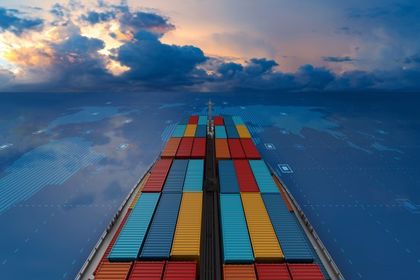
Logistics can be defined as the delivery of a product from one point to another. Various ways can be used during this transport. One of these ways is by sea. Planning of transportation takes place depending on factors such as the location, duration, and climatic conditions where the product should be delivered. Maritime transport is divided into two as scheduled and non-scheduled. The scheduled maritime is more regular and better than the tariff. In addition, the goods transported on the scheduled seaway are valuable. Materials such as dry, liquid and gas, which can usually be containerized, are transported by sea. It is also a frequently preferred way to transport low-value goods that do not need to be transported quickly. It also has many advantages to be preferred. Since large amounts of cargo can be carried at once, it is an economical and low energy consumption road. It is three and a half times more economical than the railway and seven times more economical than the highway.
- Irregular (Tramp) Transportation: Tramp transportation is the mode of transportation of materials that can fill the whole ship while transporting, usually such as coal, timber, underground mines or crude oil. It is classified according to the load weight. In this type of transport, ships are completely full and do not move until they are full.
- Regular (Liner) Transportation: In this type of transportation, unlike tramp transportation, the service performed is at the forefront, not the type of cargo. In liner transportation, the departure and arrival times of the ship and the ports to be visited are determined in advance. With this type of transportation, loads may consist of different products. In addition, ships are not expected to be full in liner transportation. When the time is right, the ship goes on a voyage.
- Tanker Transport: It is the transportation of substances called hazardous substances. Chemicals, petroleum, and petroleum products are usually transported in this category. -Ro-Ro Transportation: In this type, loads are found in large trucks and trucks, and these ships are large ships carrying loaded trucks. - Container Transport: It is used in 85% of maritime transportation. Containers used to transport various items have two sizes, 20 and 40 in standards. - Combined Transport: It is a type of shipping designed for the simultaneous transportation of oil and dry cargoes. - Bulk Cargo Transportation: It is the type of transportation where bulk loads such as mines, coal, cement, salt and sugar are carried. Maritime transport, which has many advantages over other roads, has developed considerably throughout history. It is predicted that the importance given to maritime transportation will increase much more in the coming years.